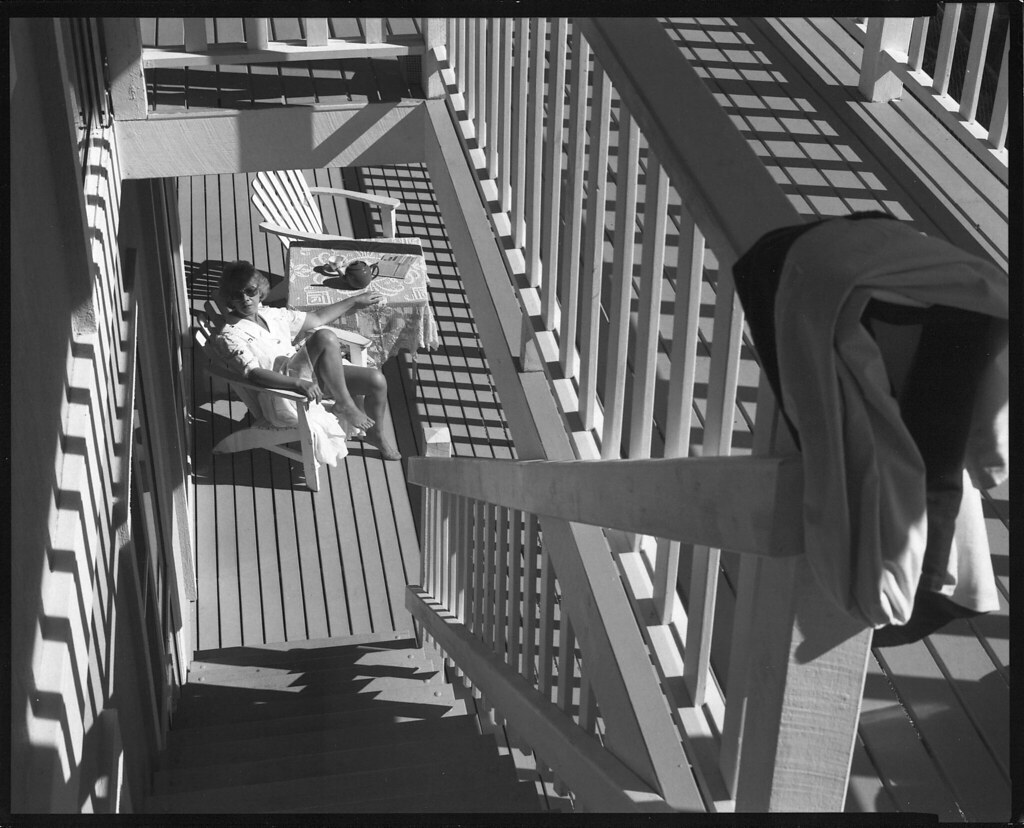Maris Rusis
Member

Morning Tea, Sunny Verandah
Gelatin-silver photograph on Ilford MG IV FB, image area 19.6cm X 24.5cm, from a 8x10 Tri-X negative exposed in a Tachihara 810HD triple extension field view camera fitted with a Fujinon-W 300mm f5.6 lens.
Optical law has not been repealed and small lens apertures cause diffraction which diminishes image sharpness. It is also true that stopping a lens down stretches depth of field and the total amount of detail in the picture can increase dramatically. The sunny verandah was a spatially deep subject where an aperture of f64 was just enough to keep the strong pattern in marginally good focus.
In the original gelatin-silver photograph the book on the table near the teapot can be deciphered as Minor White's "Zone System Manual", second edition. Apparently for the 8x10 camera sharpness is not a problem even at f64.
This photograph contains an artistic dilemma. The shapeless form on the verandah post at the right is my focussing cloth. At the time of setting the camera I had to put it there to provide something (anything) to act as a formal compositional counterbalance for the figure at the table. I think it works but it is a heavy-handed artifice nevertheless.

